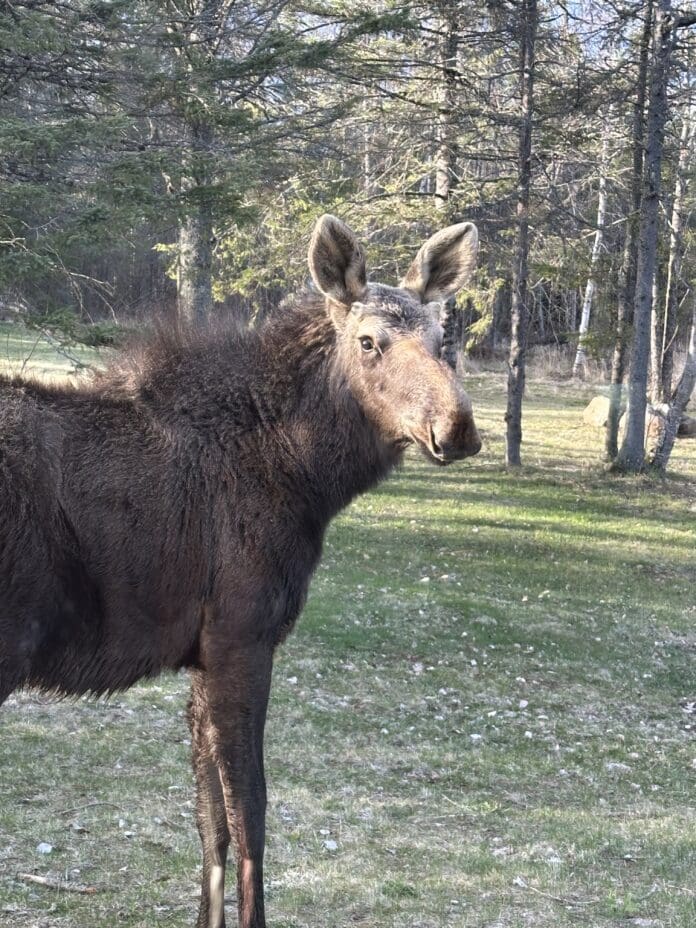Minnesota is one of a small number of states among the lower 48 where you may be lucky enough to see a moose in the wild. However, there is currently concern among naturalists and wildlife researchers because the moose population has seen a decline from around 8,800 animals in 2006, to about 3,470 animals as of 2024. According to a report authored by Mike Schrage and other researchers and aired on Minnesota Public Radio in March, this decline is being fueled by climate change, parasites and the fact that moose calves are easy prey for wolves and bears. Land Commissioner Nate Eide spoke with the Lake County Board last week about the Moose Habitat Planning Project that is under way in Lake County and in other parts of the state.
The project is a collaborative planning effort to address the need to restore large-scale moose habitat in northeastern Minnesota. Funding for this effort comes from the National Fish and Wildlife Foundation with in-kind contributions from the 1854 Treaty Authority, the Fond du Lac Band of Lake Superior Chippewa and the Minnesota Department of Natural Resources. While the plan is a work in progress, there are a number of important aspects that the public should be aware of if we collectively want to protect and insure the health and viability of Minnesota’s iconic moose population.
The long and short of this effort is to enhance and improve moose habitat in three 10 to 15 thousand acre tracts of land in Lake, Saint Louis and Cook Counties. The presence of spruce budworm is one of a number of problems that will need to be addressed as this species decimates the foliage that moose rely on for both food and shelter. Other strategies that will need to be implemented include, advocating for diverse timber market development, investment in roads and infrastructure for improved access to designated areas to support habitat management and avenues to obtain funding for the implementation of restoration and management plans.
“Though there is a strong desire to have moose continue to thrive in Minnesota, the level of support necessary to prioritize moose and moose habitat management is lacking. This impacts actions that benefit moose such as limiting the scale of habitat treatments, restricting the tools available for efficient and effective habitat management and limiting funding and resources necessary for habitat treatments, research and monitoring”.
Public awareness of this situation is important. Interested North Shore residents can learn more about the Moose Habitat Planning Project by exploring the Minnesota DNR’s Moose Management Report at www.dnr.state.mn.us>moose.
In other business, the Board authorized the appointment of Assistant County Attorney Laura Nygaard, to the position of County Attorney, effective June 3, 2024. Deputy Sheriff Timothy Johnson will be retiring on June 25th. The Board expressed appreciation for his service to Lake County and approved the recruitment for a full-time replacement. Finally, the Board approved the transfer of $99,218.42 of Lake County’s Affordable Housing Aid to the Lake County Housing and Redevelopment Authority (HRA) for use on phase 1 of the county-owned Lakeview Apartments rehabilitation project.
The next Lake County Board of Commissioners meeting will be held on June 11th at 2:00.



